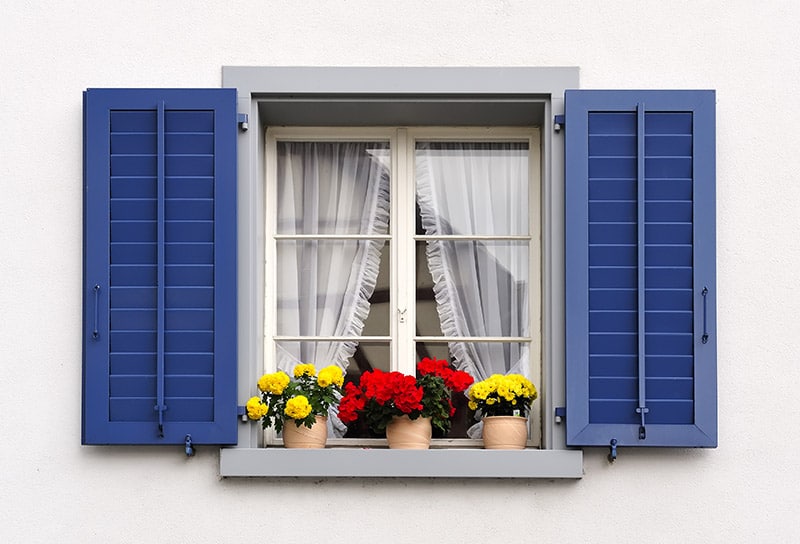How To Install Window Blinds
Embarking on a blinds installation project can initially seem daunting, yet with the right guidance, it becomes an achievable task that can significantly enhance the aesthetic and functional appeal of your windows. Whether you’re looking to install vertical blinds for a sliding door or classic window blinds for privacy in your living room, understanding the basics of how to measure windows for blinds, how to put blinds up, and how to mount blinds ensures that your window treatments fit perfectly and look professional. This process not only elevates the visual appeal of your space but also contributes to energy efficiency by providing better control over light and insulation.

As we dig into the nuances of blinds installation, you’ll gain insights into choosing the right window blinds for your specific needs—be it for the window sill, window frame, or window casing. We’ll cover everything from gathering your tools and materials, through the step-by-step installation process, to customizing and adjusting your blinds for that perfect look and functionality. This guide aims to demystify how to hang blinds, how to put up blinds, and more, making window blinds installation a straightforward task. Whether you’re wondering how to install window blinds into a window opening or window trim, or looking for tips on how to install blinds for optimal light control, you’ll find the answers here, empowering you to enhance your home’s appeal with confidence.
Choosing the Right Blinds for Your Window
Determine Blinds Placement: Inside vs. Outside Mount
When selecting blinds, one of the first decisions you’ll need to make is whether to opt for an inside mount or an outside mount. Each option offers distinct advantages depending on your specific needs and the characteristics of your windows.
- Inside Mount:
- Aesthetics: Provides a clean, built-in look, as the blinds fit neatly within the window frame, enhancing the overall appearance and allowing the window’s architecture to shine.
- Space-Saving: Ideal for areas with limited space as the blinds do not protrude into the room.
- Measurements: Requires precise window measurements to ensure the blinds fit perfectly within the frame.
- Outside Mount:
- Coverage: Extends beyond the window frame, offering better light control and increased privacy.
- Installation Ease: More forgiving with measurements and can cover up any imperfections in the window’s shape or size.
- Visual Impact: Can make windows appear larger and is ideal for covering unattractive window frames or hardware.
Types of Blinds: Pros and Cons
Blinds come in various materials and styles, each offering unique benefits and aesthetic appeal. Here’s a breakdown of popular types:
- Venetian Blinds: Composed of horizontal slats and available in materials like wood, aluminum, and plastic. They offer adjustable light control and a classic look but can require more cleaning effort due to dust accumulation on the slats.
- Vertical Blinds: Best suited for large windows or sliding doors, vertical blinds enhance the perception of height in a room and are generally easier to clean and maintain.
- Mini Blinds: Similar to Venetian but feature narrower slats, making them ideal for smaller windows. They offer a modern look and are typically more budget-friendly.
- Wood Blinds: Bring natural beauty indoors, suitable for various decor styles from rustic to contemporary. They provide excellent light and privacy control but may not be the best choice for high humidity areas.
- Top Down Bottom Up Blinds (TDBU): Offer versatility in privacy and light control by allowing you to adjust the blinds from both the top and bottom. Ideal for rooms facing public areas.
Measuring Your Windows for the Perfect Fit
Accurate measurements are crucial for blinds installation. Here’s how to ensure you get the right fit, whether for an inside or outside mount:
- Width Measurement: Measure the inside width of the window frame at the top, middle, and bottom. Record the narrowest width for an inside mount and the widest for an outside mount to ensure maximum coverage.
- Height Measurement: Measure the height at three points: left, middle, and right. Use the longest height for outside mounts to allow for adequate coverage.
- Depth Measurement: Especially important for inside mounts to ensure there’s enough room for the blinds to operate correctly. Check the required depth in the product specifications and compare it with your window frame’s depth.
Properly chosen and measured blinds not only enhance the functionality of your windows but also contribute significantly to the room’s overall aesthetic and comfort.
Gathering Your Tools and Materials
Essential Tools
To ensure a smooth installation of your blinds, having the right tools at hand is crucial. Here’s what you’ll need:
- Tape Measure: Essential for accurate measurements of the window’s width, height, and the distance from any obstructions like handles.
- Pencil: For marking where to place the brackets and other installation points.
- Drill: Required for making holes in the wall for the screws. Ensure you have a drill bit that matches the size of your wall plugs.
- Spirit Level: To make sure your blinds hang straight.
- Screwdriver: Needed for securing the brackets and other components.
- Ladder or Step Stool: Necessary for reaching higher installation points safely.
Materials Needed
While your blinds will come with brackets, there are other materials you will need to purchase:
- Screws and Wall Plugs: Typically, two screws and wall plugs per bracket are required, plus additional for the child safety device if applicable.
- Safety Washers: These are crucial for preventing the cords from forming dangerous loops. Known as Inner Cord Stop Devices, they are essential if children or pets are in the home.
Safety Equipment
Safety should never be overlooked when installing blinds. Here are the essential items to protect yourself:
- Safety Glasses: Protect your eyes from dust and debris when drilling.
- Gloves: To keep your hands safe from sharp objects and friction while handling tools and materials.
By gathering these tools and materials before your blinds arrive, you’ll be prepared to start the installation process immediately, ensuring a smooth and safe setup.
Step-by-Step Installation Process
Marking the Bracket Placement
To begin the blinds installation, measure the width of your window and mark the bracket placement on either side of the frame. It’s recommended to position the brackets 3 to 6 inches from the edges of the window frame for optimal support and functionality. For an inside mount, ensure the mark is about an inch from the edge, which can vary based on specific product requirements.
Drilling Pilot Holes and Securing Brackets
Once you’ve marked the positions, use a level to ensure the brackets will be perfectly horizontal. This step is crucial for the proper operation of the blinds. Drill pilot holes at each marked position to facilitate easier screwing and to prevent damage to your window frame or walls. Secure the brackets with the screws provided, ensuring they are tight and well-aligned.
Attaching the Headrail and Blind Slats
With the brackets securely in place, slide the headrail into the brackets. Make sure it snaps securely into place, indicating that it is correctly installed. Next, attach the blind slats to the headrail. Ensure they are evenly distributed and level to maintain a uniform look and functionality.
Installing the Valance and Wand
Finally, attach the valance to the headrail using the clips provided. The valance should be positioned for aesthetic alignment with the top of the window frame. Install the wand by attaching it to the control mechanism on the headrail. This wand will help you easily adjust the orientation of the blinds.
By following these detailed steps, you can ensure a successful installation of your new window blinds, enhancing both the functionality and the appearance of your space. Remember to test the blinds by lowering and raising them to ensure all parts are functional and the blinds operate smoothly.
Customizing and Adjusting Your Blinds
Shortening Blinds for Length Adjustment
Adjusting the length of your blinds can be crucial for achieving the perfect fit and functionality. Here are the steps to shorten your blinds effectively:
- Identify the Bottom Rail: Locate the bottom rail of your blinds, which houses the lift and ladder cords.
- Remove the Plugs: Use a flathead screwdriver to carefully remove the plugs at the bottom of the rail. This exposes the cords needed for adjustment.
- Adjust the Lift Cord: Untie the knots on the lift cord and pull it to raise the blinds to the desired length. Remove any unnecessary slats.
- Reattach the Bottom Rail: After removing the excess slats, slide the bottom rail back into place.
- Secure the Cords: Retie the lift cord and cut the ladder strings to the new length, ensuring they are even and secure.
- Test Your Adjustments: Make sure the blinds raise and lower smoothly and maintain a level appearance.
Installing Hold-Down Brackets for Door Blinds
Hold-down brackets are essential for blinds on doors or in mobile environments like RVs, as they prevent the blinds from swinging. Installation is straightforward:
- Measure and Mark: Determine the placement for the brackets, ensuring they are aligned and level on both sides of the window or door.
- Drill Pilot Holes: Mark the bracket locations with a pencil, then drill pilot holes to prevent damage to the surface.
- Secure the Brackets: Attach the hold-down brackets with screws, ensuring they are tight and flush against the surface.
- Insert the Pins: Place the hold-down pin into the center of the bottom rail. Adjust the position if necessary to ensure the blinds function correctly.
Maintenance and Cleaning Tips
Keeping your blinds clean and well-maintained not only enhances their appearance but also extends their lifespan. Follow these tips for effective maintenance:
- Regular Dusting: Use a feather duster or a soft brush attachment on a vacuum to remove dust accumulation.
- Deep Cleaning: For deeper cleans, use a mild soap solution with a soft cloth for vinyl or synthetic blinds, and wood polish for wooden blinds.
- Spot Cleaning: Address spills or stains immediately with a gentle cleaning solution to prevent permanent damage.
- Check for Wear: Regularly inspect the blinds for any signs of wear or damage, such as frayed cords or loose brackets, and address these issues promptly to maintain functionality and safety.
By following these guidelines, you can customize, adjust, and maintain your window blinds, ensuring they remain a functional and attractive part of your home décor.

Conclusion
Throughout this guide, we’ve explored the comprehensive process of selecting, measuring, and installing window blinds—a task that initially might seem intricate but is made approachable with the right instructions. From choosing the most suitable blinds for your space to ensuring they are perfectly installed for maximum aesthetic appeal and functionality, we’ve covered essential steps to empower you to enhance your home’s decor and comfort. This journey through the installation process not only equips you with the knowledge to execute a successful project but also instills confidence in making informed decisions regarding window treatments.
As we conclude, remember that the perfect installation of window blinds significantly adds to the charm and utility of your windows, contributing to an energy-efficient and visually appealing home. For those looking to replace their old and worn-out windows with new energy efficient ones, do not hesitate to get a free quote now, ensuring your window replacement is as seamless and effective as possible.





